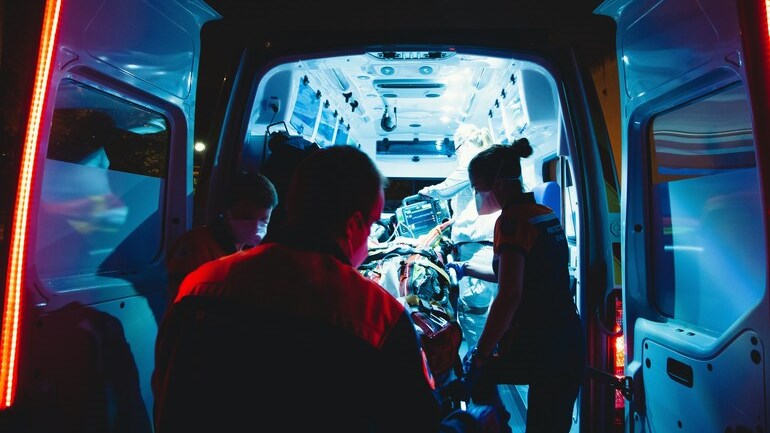Simulation shows how stroke ambulances can save lives

Logistical obstacles often hamper fast and effective treatment of strokes. One way to shorten the time to diagnosis and treatment is to use mobile stroke units.
Strokes are the second leading cause of death worldwide; what with the success of the treatment being time critical, a researcher at Malmö University has developed models that show the benefits of dedicated stroke ambulances.
In his doctoral thesis Optimisation and simulation modelling for improved analysis and planning of prehospital stroke care, Saeid Amouzad Mahdiraji investigates how special stroke ambulances can be utilised.
In our Discrete Event Simulation (DES) model, we have not only compared traditional ambulances with stroke ambulances but also looked at what the outcome will be when these vehicles are coordinated together.
Saeid Amouzad Mahdiraji
“If treatment is provided within one hour of the onset of symptoms, the patient has a much better chance of coping and recovering well,” says Amouzad Mahdiraji.
But logistical obstacles often stand in the way of fast and effective treatment. One way to shorten the time to diagnosis and treatment is to use mobile stroke units (MSUs).
“An MSU is equipped with a portable CT scanner and can therefore diagnose the type of stroke it is. This can save a lot of time, and the patient can also be directed to a hospital with the right expertise,” explains Amouzad Mahdiraji.
In the last two decades, such specialised ambulances have started to be used, says Amouzad Mahdiraji, but they are an expensive investment, and decision-makers need a reliable justification.
“In particular, we have looked at the time benefits of these ambulances. Not the exact health effects, but the cost benefits, and also how many vehicles might be appropriate in a specific health region.” It is here that Amouzad Mahdiraji's simulation model can be used:
“In our Discrete Event Simulation (DES) model, we have not only compared traditional ambulances with stroke ambulances but also looked at what the outcome will be when these vehicles are coordinated together. One conclusion is that it is usually most efficient to combine these two transports for the same patient.”
Rather than using data on real individuals, the research team have used a synthetic population that has been artificially generated; this was to protect sensitive personal data.
In the optimisation model, Amouzad Mahdiraji has examined where the stroke ambulances should be on standby. Is it in metropolitan areas where most people live, or out in the countryside where people are far from the nearest hospital?
“My conclusion is that both perspectives should be taken into account, so that both urban and rural areas can benefit from the MSU ambulances.”
He hopes that his conclusions will now be tested and evaluated by medical experts to see how they can be implemented.
More about strokes
Stroke is the collective name for the condition of sudden symptoms that occurs when part of the brain's nerve tissue is affected by a reduced supply of oxygen to the affected area. The lack of oxygen may be caused by a blood clot in a blood vessel, known as a cerebral infarction or ischaemic stroke. It can also be the result of a cerebral haemorrhage, that is, a rupture of a vessel inside the brain – haemorrhagic stroke, or on the surface of the brain – subarachnoid haemorrhage. The most common type of stroke is cerebral infarction, accounting for around 85 per cent of cases, while the remaining strokes are cerebral haemorrhages.


